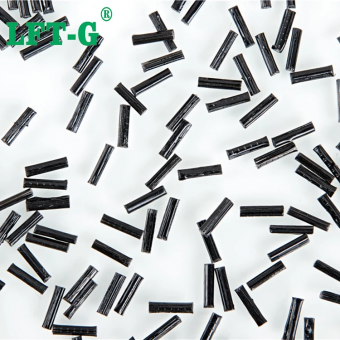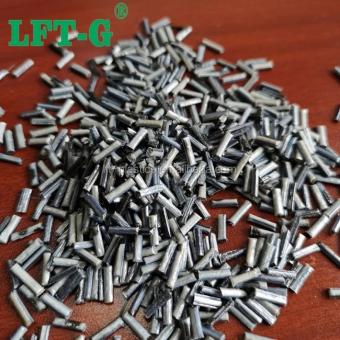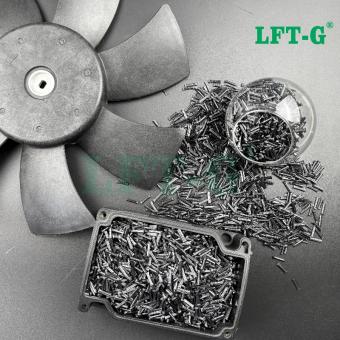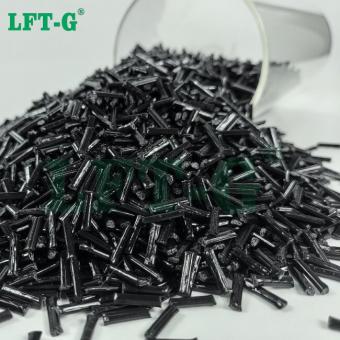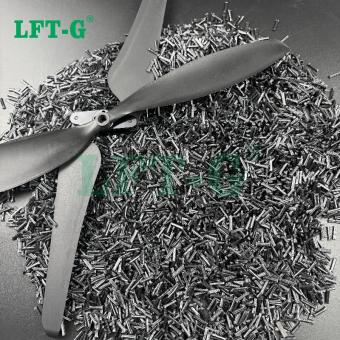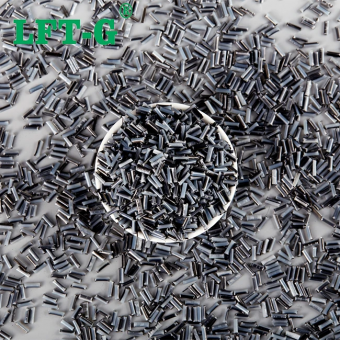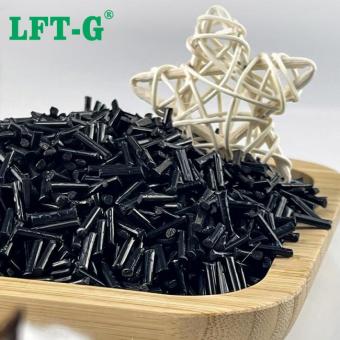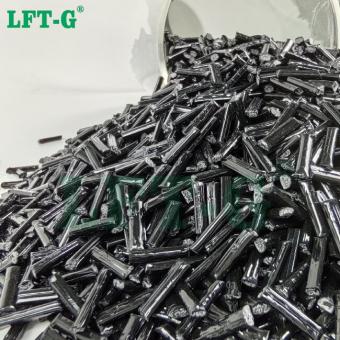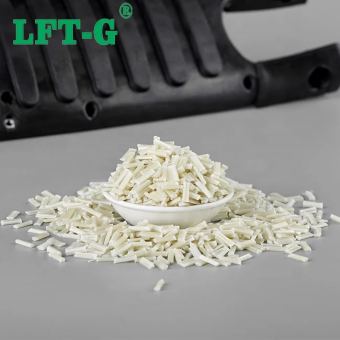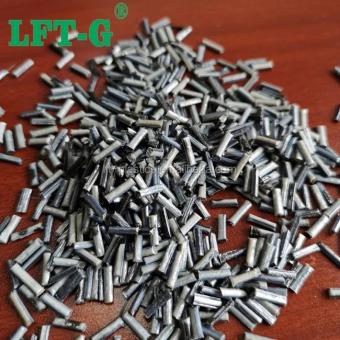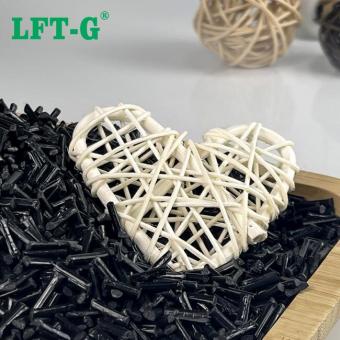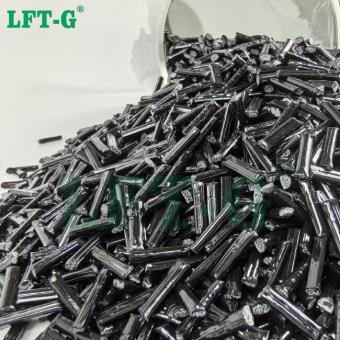Long carbon fiber is a new material with high strength and high modulus and excellent mechanical properties. It is a microcrystalline graphite material obtained by carbonization and graphitization of organic fibers. Its specific gravity is less than 1/4 of steel, and its strength is higher than that of steel. Corrosion resistant, high modulus, no melting. And a variety of resin substrates after impregnation extrusion molding into pellets, long carbon fiber polymer. Can be used for direct molding products. In recent years, it has been widely used in aerospace, mechanical and electronic chemicals.
-
Long Carbon Fiber Nylon 6 Modified CompoundsCompared to short fiber counterparts, this composite offers superior load-bearing capability and long-term durability under dynamic stress conditions. Its balanced properties make it ideal for structural components in the automotive, aerospace, power tool, and industrial sectors, where lightweight yet robust materials are essential.
- pa6 plastic material
- pa6-cf60
- pa6 30 fv
- custmized dyed nylon pa6 supply
- pa6 pellets
- carbon fiber reinforced
Tags :
-
Carbon Fiber Reinforced PEEK Resin Pellets Injection MoldingPEEK is a versatile molding resin ideal for applications requiring sterilized equipment or containers. It is highly resistant to chemicals and heat and capable of resisting submersion in liquids long-term. It also can generally be subjected to harsh operational environments. The mechanical properties of PEEK allow it to be used as reinforcement material in various scenarios.
- peek aeropspace
- carbon fiber engineering
- peek cf injection
- lcf carbon
- plastic modified manufacturer
- peek pellets
Tags :
-
Carbon Fiber Reinforced PPS Resin Pellets Injection MoldingPPS is a high-performance, tough engineering plastic with great dimensional and thermal stability, as well as a wide operating temperature range of up to 260 °C and good chemical resistance. Moreover, PPS, like most other thermoplastics, is an electrical insulator. Its ability to be used at high temperatures coupled with its thermal stability makes PPS great for applications such as semiconductor components in machinery, bearings, and valve seats.
- carbon fiber composites
- pps injection
- pps car parts
- pps melting point
- pps composite
- pps plastic price
Tags :
-
Carbon Fiber Reinforced PLA Resin Pellets Injection MoldingLFR-PLA can be processed using conventional plastic processing techniques like injection molding and extrusion, offering good adaptability in manufacturing. It is widely used in industries like automotive, consumer electronics, 3D printing, and eco-friendly packaging due to its combination of high performance and sustainability.
- pla price per kg
- carbon fiber reinforced polypropylene
- lft g for automobile market
- applications of polymers in aerospace engineering
- thermoplastic cfrp
Tags :
-
Carbon Fiber Reinforced PA 12 Nylon Resin Pellets Injection MoldingPA12 Long Carbon Fiber (LCF) offers significantly higher strength, stiffness, and fatigue resistance compared to PA12 Short Carbon Fiber (SCF). LCF is ideal for structural and load-bearing applications such as drone frames, automotive parts, and robotic arms. It provides excellent dimensional stability and impact resistance.
- pa12 carbon fiber
- pa12 resin
- nylon pa12
- nylon 12 material
- carbon fiber nylon pa12
- pa12 for sale
Tags :
-
Carbon Fiber Reinforced PA 66 Nylon Resin Pellets Injection MoldingOur long carbon fiber reinforced PA66 material is a high-performance composite designed for demanding industries like automotive, electronics, and power tools. It combines the strong mechanical properties of PA66 with the stiffness of long carbon fibers, offering enhanced durability, dimensional stability, and resistance to fatigue.view more
-
Carbon Fiber Reinforced PA 6 Nylon Resin Pellets Injection MoldingPA6 Long Carbon Fiber Reinforced Composite is a high-performance engineering material composed of a polyamide 6 (PA6) matrix reinforced with long carbon fibers. It delivers outstanding mechanical strength, rigidity, and fatigue resistance, while maintaining excellent dimensional stability and thermal performance. Compared to short fiber counterparts, this composite offers superior load-bearing capability and long-term durability under dynamic stress conditions.
- polypro pellets
- nylon pa6 plastic material
- difference between pa6 and pa66
- pa6 china
- polyamide mxd6 market
Tags :
-
Carbon Fiber Reinforced PP Resin Pellets Injection MoldingPolypropylene, also known as PP or polypropene, is a polyolefin or saturated polymer. It is a low-density thermoplastic with good resistance to heat. Other characteristics of PP include: chemical resistance, elasticity, toughness, fatigue resistance, and electrical insulation capability.
- carbon fibre vs glass fibre
- lightweight composite
- pp granules price per kg
- carbon fiber reinforced plastics
- is copolymer plastic
- 3d printed carbon fiber vs carbon fiber
Tags :
-
Glass Fiber Reinforced Nylon 66 Resin Pellets Injection MoldingNylon 66, also written as nylon 6-6, nylon 6,6, or nylon 6/6, is a more crystalline version of nylon 6. It is also referred to as polyamide 66 or PA 66. It has improved mechanical properties due to its more ordered molecular structure. Nylon 66 material for machining has improved temperature resistance and lower rates of water absorption when compared to standard nylon 6.view more
-
PPH Homopolyer Thermoplastic Plastics Long Carbon Fiber Plastic CompoundsCarbon fiber reinforced composite (CFRP) is composed of carbon fiber as a reinforcement material and resin as a matrix material, and early carbon fiber composite materials are mainly used in the military field. With the improvement of material properties, molding process and price cost, carbon fiber composite materials are more and more used in general industry and sports and leisure fields.
- copolymer and homopolymer
- reinforced polypropylene
- composite materials for wind power turbine blades
- homopolymer definition
- pp cf30
- lft pellets
Tags :
-
PP CF Thermoplastic Plastics Long Carbon Fiber Plastic CompoundsThe modified polypropylene material reinforced by carbon fiber has a series of advantages, such as light weight, high modulus, high specific strength, low coefficient of thermal expansion, high temperature resistance, heat shock resistance, corrosion resistance, good vibration absorption, etc., and can be applied to auto parts such as automobile sub-instrument assembly.
- aramid carbon fiber
- carbon fiber thermoplastic composite
- what is a homopolymer
- oem polypropylene fiber
- homopolymers and copolymers
- polymer vs copolymer
Tags :

 e-mail
e-mail English
English français
français Deutsch
Deutsch русский
русский italiano
italiano español
español português
português العربية
العربية 日本語
日本語 한국의
한국의 中文
中文












